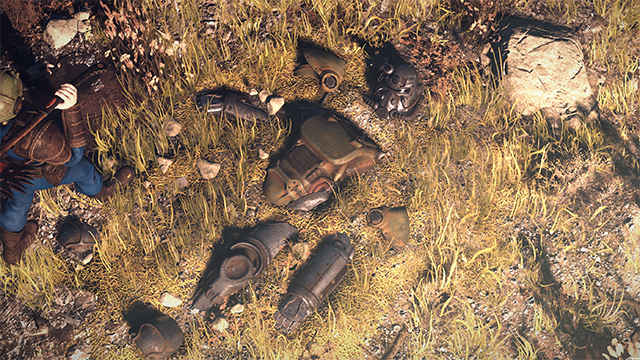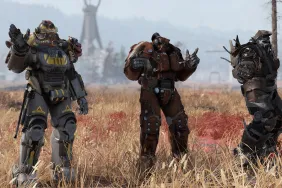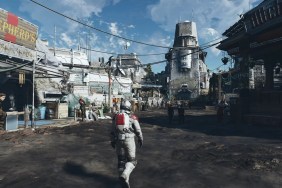Even disregarding the disappointments that accounted for its relentlessly negative reception, Fallout 76 presents an entirely different vision of a Bethesda Game Studios title. An always-online, multiplayer experience centered around hardcore survival mechanics is an obvious departure from the single-player lineage of Fallout 3 or mega-hit Skyrim. But despite this major shift, Fallout 76 represents continuing trends in the studio’s ever-changing design priorities, which can be easily traced back through its previous releases. Looking at the studio’s past, it’s possible to track its creative trajectory as the team barrels into the future and toward the mysterious Starfield and beyond.
More Action-Focused Combat
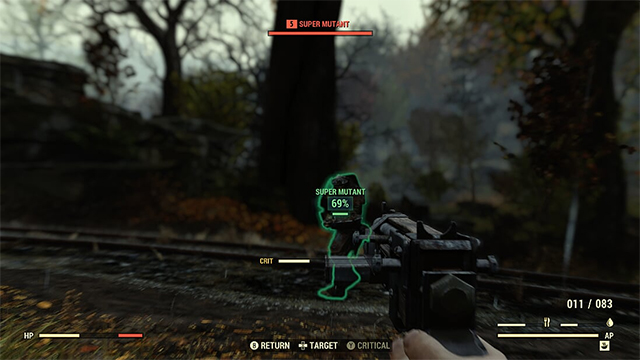
Bethesda Game Studios has never been known for its excellent combat design. From the floaty slicing of Morrowind’s swordplay to Fallout 3’s imprecise shooting, it’s no secret that the studio traditionally allocated its resources more toward storytelling in explorable spaces.
And yet, BGS has gradually improved the feel of combat with each release. The games finally began to capture the feeling of clanging swords and shields in Oblivion. And Fallout 4 brought a new responsiveness to its shooting with detailed animations and the ability to aim directly down a gun’s sight.
Fallout 76 further raises that quality bar an almost imperceptible amount, perhaps only thanks to a slight graphical upgrade and a new multiplayer-compatible, real-time twist on the V.A.T.S. mechanic. Still, Fallout 4 and its multiplayer spin-off are two more data points on the decades-old graph suggesting the studio had always wanted combat to be a proper gameplay pillar. It seems like a safe bet to expect another noticeable uptick in the speed and intensity of Starfield’s combat… assuming it has combat, since we know almost nothing about the game.
New Types of Terrain and Traversal
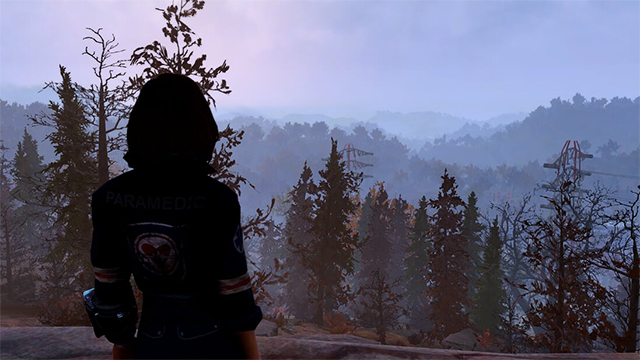
One of Fallout 4’s few notable improvements was its fresh emphasis on vertical spaces, which mainly made itself apparent in combat encounters. The game also introduced a new version of the franchise’s iconic power armor, which allowed players to safely fall from any height so long as they were wearing said metal suit (Skyrim saw a precursor to this ability in the form of the “Become Ethereal” dragon shout). Jetpacks were also added to the suits, though they were a late-game find. Players also needed to don power armor if they wanted to safely explore the Glowing Sea, a new type of especially irradiated area which held secret locations beyond the border of the player’s map. The more vertical map and its special, extra dangerous terrain encouraged players to use jetpacks and power armor, which is likely something Bethesda intended.
With a map four times larger than Fallout 4, Fallout 76 has no shortage of vertical spaces or power armor suits. The map may not be as dense as that of its predecessor, but it largely leans toward to the same Y-axis-friendly level design. Consider for a moment that Starfield will be set in space, perhaps the most vertical of real-life places). There’s more potential to expand on this verticality thanks to, you know, the lack of gravity.
The last two Fallout games’ inclination toward having extra vertical and diverse terrain, and providing players with an alternate way to traverse those areas might suggest Bethesda has been preparing to make the jump to designing space-set areas for some time now. Maybe we shouldn’t simply expect a sci-fi-skinned Elder Scrolls with only a starry skybox and perhaps a space (pun intended) that takes more advantage of a taller play area.
More Crafting
Much of Fallout 76’s legacy, or at least that of its launch, will be defined by an overwhelming feeling of incompleteness. Its world is devoid of interesting characters. There’s not a single living human NPC. Quests are mostly given and completed via audio logs and terminals. There is little to compel the player forth on its hollow hamster wheel, aside from the game’s robust crafting and survival systems.
After its divisive inclusion in Fallout 4, Bethesda brought back its revamped crafting in a big way for 76, framing much of the player’s progression and rewards around the gathering of materials and improving equipment.
This doesn’t necessarily suggest that Starfield will go full No Man’s Sky (and I do not mean that pejoratively, to be clear), but it wouldn’t be surprising if Bethesda games continued pushing crafting and survival mechanics into a more central role in its next exploration-heavy game. After all, the studio could possibly be using Fallout 76 as a testing grounds for a more elaborate or streamlined crafting system. While a survival game naturally begets gathering resources, it doesn’t mean that the studio’s next batch of games can’t learn from what Fallout 76 did in that department.
Expect the Return of Interesting NPCs
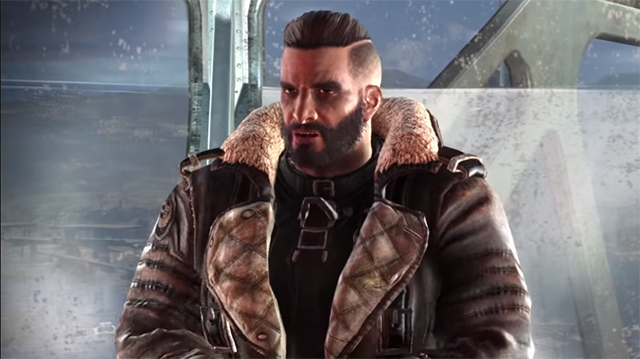
Look, we all know Bethesda messed up. Interesting locations and the interesting people inhabiting them had always been what defined a Bethesda Game Studios game. It’s almost unimaginable that it would have judgement so poor as to release another game lacking NPCs, even if it were somehow another multiplayer experience.
So, you can probably expect to see plenty of humanoid NPCs in Starfield and beyond. But one could also hope that Bethesda might take extra special care to create characters that are striking enough to leave a lasting impression, especially after Nick Valentine’s resounding popularity was one of the few bright spots of Fallout 4’s own reception.
Many, Many More Bugs
Games made in Bethesda’s Creation Engine will always have an absurd amount of severe bugs at launch. Any game of any scope, in any engine will have its share of game-breaking bugs. That’s how video games work, and it’s important that every fan of the medium understands this.
But holy hell, BGS outdid themselves with Fallout 76’s “spectacular” bugs, which were so severe that the studio issued a warning to fans. New glitches like self-deleting beta files and a bug that made a player invincible (in a multiplayer survival game, remember) join Bethesda classics like enemies spawning in walls, uselessly broken interactables, and horribly warped character models.
This one might be too obvious, but players might as well internalize the fact that Starfield will have its own version of backwards-flying dragons now, rather than later. Bethesda might be able to release a less buggy game if it starts massively crunching like Rockstar or CD Projekt Red, but that might only happen when pigs fly. And those pigs would, of course, be flying backwards.
More Shameless Attempts to Appeal to a Mass Audience
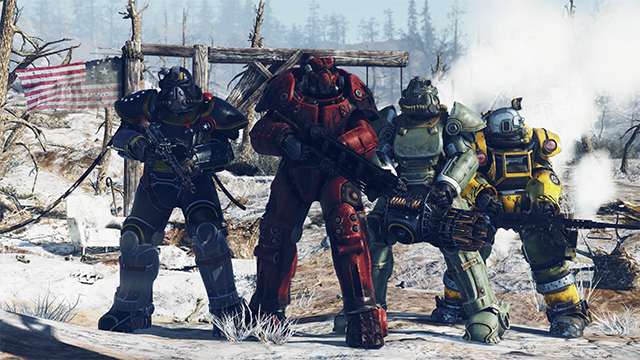
It’s difficult to guess what form this trend might take in Starfield, but that doesn’t make it any less clear: Bethesda has an unfortunate habit of trying to appeal to an ever-wider audience. This shift will probably continue to the detriment of what has historically made its games enjoyable or at least given the games a signature Bethesda flair.
Sometimes the offenses are larger, like the fact that Bethesda has gradually forgotten that Fallout was initially an anti-nuclear satire instead of a wacky celebration of nuclear destruction. Some take issue with Skyrim’s hand-holding quest markers taking away from organic exploration. Others have a problem with Fallout 4’s shallow and fully-voiced dialogue system. There are even players who believe the game’s increased focus on traditional action is a bad thing, as it might distract from the contemplative exploration that makes these games special in the first place.
In Fallout 76, I personally take issue with the inclusion of cliché classics like “Wouldn’t It Be Nice” by The Beach Boys and “Mr. Sandman” by The Chordettes on the soundtrack. Though I like the song, the still-huge pop culture relevance of “Wouldn’t It Be Nice” creates an undeniable tonal clash with the rest of the game. But Bethesda knows that these songs are massively well known, and people are generally pleased by things they recognize.
More Small Iterations on Classic Mechanics
Despite the mostly fair amount of negativity being leveled toward the game, Fallout 76 actually does present a few meaningful, successful improvements on classic Bethesda Game Studios mechanics.
Becoming over-encumbered, for instance, now only affects AP (stamina) regeneration, versus making the player mostly immobile until the extra weight is offloaded. And while V.A.T.S was necessarily transformed into a real-time auto-aim mechanic by the present multiplayer aspect, it’s a more fitting feature when considered alongside the franchise’s recently more compelling gunplay. Among other changes are a more cohesive attempt at survival mechanics and some interesting UI tweaks during character creation. It’s important to remember that, while generally disappointing, Fallout 76 does add some aspects to the formula that are solid and could meaningfully contribute to the studio’s incoming suite of titles.
So where does this all leave Bethesda’s next single-player game? While it’d be silly to pretend we could completely and confidently divine Starfield’s design from unintentional hints left in Fallout 76, it’s impossible to deny shifts in design priority across the last decade of Bethesda Game Studios titles. Even considering its surprising turn toward multiplayer, Fallout 76 proudly iterates on the studio’s signature solo adventures despite its jarringly negative reception. Believe it or not, there are small pieces of Fallout 76 which serve as a hopeful pre-Starfield reminder that BGS is still improving small, essential pieces of its games, despite the spectacular failure its most recent release.
